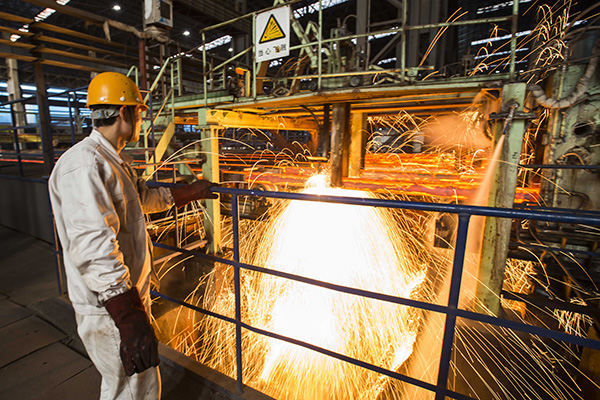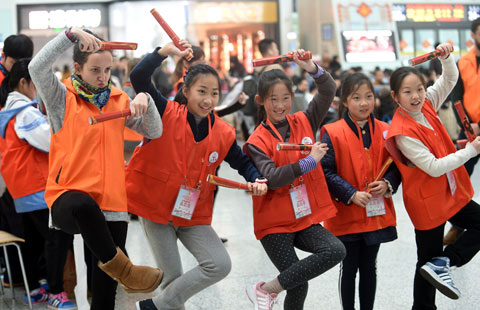Structural reform holds key to growth
 |
|
A worker at a steel company in Lianyungang, Jiangsu province, in Jan 2015. [Photo/China Daily] |
Steel and aluminum companies have made progress, but oil firms lag behind
Nearly four years after President Xi Jinping vowed to shake up State-owned enterprises, 2016 appears to be another mixed story for oil and gas producers, steel-makers and aluminum smelters, with some grappling with declines while others are turning losses to profits or even beating earnings estimates.
Experts call for government and State-backed companies' determination to push for the ongoing reforms.
China's big three oil companies had another tough year coping with the crash in crude-oil prices.
China National Petroleum Corporation said in a statement earlier that net income during the first nine months of 2016 fell 94 percent to 1.73 billion yuan ($252.4 million), with full-year results poised to "decrease substantially" from 2015.
China National Offshore Oil Corp didn't fare better. The country's biggest offshore oil and gas producer posted a 23.2 percent year-on-year drop in sales for the first three quarters of 2016, but didn't report its earnings.
China Petrochemical Corp, a relative downstream player compared with CNOOC and CNPC, managed to register a 11.2 percent growth of net profits for the first nine months of last year.
"Reform of bloated State-owned energy firms in the highly-monopolized oil and gas sector is economically important, always centering on improving economic efficiency and ensuring national energy security," said Fielding Chen Shiyuan, Hong Kong-based Asia economist at Bloomberg Intelligence.
Chen said the difference of energy giants' earnings performance will not make the reform change course. But, he said, "the hard fact is we are moving too slowly over the past few years."
Though conglomerates set up operational branches to raise business efficiency, it is far from enough to solve the market access problem at its root, he said.
Mixed-ownership reform, highlighted as a critical pillar of SOE reform efforts in 2017, may stand as a modestly useful solution.
"Eventually we may have to come back to the track of market-oriented restructuring to enable SOEs to operate like purely commercial entities, which is the final answer to the shake-up," Chen noted. "And this cannot be done without a big push and determination from the government."
What worries Chen most is that when efforts to prop up the domestic economy show any signs of bearing fruit, the pressure for change may be reduced. With commodity prices on the way to a rebound, all the good news may lend an air of complacency to the overhaul of sclerotic SOEs, with some making excuses for delays and perfunctoriness.
"That's why policymakers' determination and support really matter," he added.
On the other hand, steel and aluminum sectors stand as the poster child of the country's fruitful supply-side structural reform.
After merging with smaller rival Wuhan Iron to create the world's second-largest steel-maker, Baosteel Group said last week that net income last year is estimated to surge 770 percent from 1.013 billion yuan in 2015.
According to China Iron and Steel Association, the country's steel sector registered a total profit for the first eleven months last year of 33.16 billion yuan, turning it around from a loss of 52.91 billion yuan in 2015.























